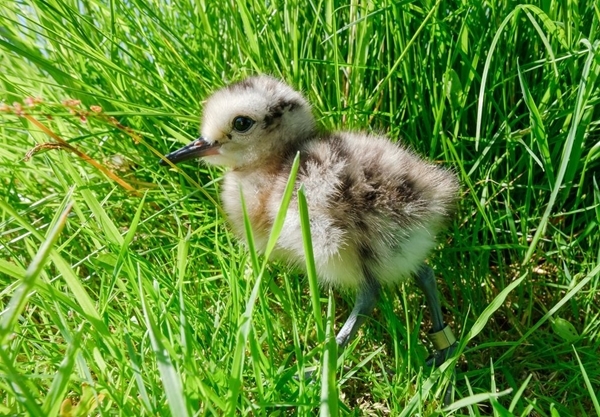
A CURLEW that has been incubated as an egg and reared in its local landscape – a process known as headstarting - has successfully returned home for the first time ever.
The bird is one of six chicks reared as part of the UK Lowland Curlew Recovery Project, better known as Curlew Country, in 2017 – another UK first – and is already displaying breeding behaviour.
The Curlew Country project, hosted by leading conservation charity the Game & Wildlife Conservation Trust (GWCT), hopes that this historic occasion is the first of many.
Project manager Amanda Perkins said: “Seeing the result of all our hard work – not just the project team, but farmers, landowners, fundraisers and the local community – is a proud moment, but we must make sure it isn’t wasted.”
“Now we have shown that this process can work, we need a policy that allows those managing the land to give all curlew a fighting chance.”
This situation for curlew is critical, with a 46% decline across the UK from 1994 to 2010. Curlew was added to the UK red list in in December 2015, and it is argued to be the bird of greatest conservation concern within the UK.
This vital project started in 2017, following a successful application to Natural England for a licence to collect eggs from nests. In 2017 and 2018, Curlew Country successfully released 27 chicks using this methodology, which was a 207% increase in productivity of nests that the team studied in the previous two years.
The significant population of up to 40 pairs of birds in the Shropshire Hills is one of only a few lowland populations of this size remaining outside of nature reserves.
Working with farming and land managing partners, the project discovered that no chicks survived from any of the 30 nests monitored in 2015 and 2016 (prior to headstarting) and each year only 3 nests got beyond egg stage to hatch chicks. Predation was the main cause of loss, with foxes responsible for over 50% and badgers just under 25%, with other failure due to a range of causes.
Research has shown that controlling predators will be necessary to save curlew now and a more flexible approach to other practices such as cutting and rolling, as well as the creation of ideal habitat.
It is important that the current generation of curlews and the farmers with fond memories of them are not the last. Each week, the Curlew Country project receives several requests from groups or individuals seeking advice on curlew recovery.
More information about the project can be found on www.curlewcountry.org, along with updates throughout the season.
Notes to editors
The Game & Wildlife Conservation Trust – providing research-led conservation for a thriving countryside. The GWCT is an independent wildlife conservation charity which has carried out scientific research into Britain’s game and wildlife since the 1930s. We advise farmers and landowners on improving wildlife habitats. We employ more than 60 post-doctoral scientists and other research staff with expertise in areas such as birds, insects, mammals, farming, fish and statistics. We undertake our own research as well as projects funded by contract and grant-aid from government and private bodies.
For information, contact:
Eleanor Williams
Telephone: 07592 025476
Email: press@gwct.org.uk